MODELING DECIMAL DIVISION
Subscribe to our ▶️ YouTube channel 🔴 for the latest videos, updates, and tips.
For some real-world problems, we may need to divide a decimal by whole number.
Let us see how decimal division can be modeled through the following example.
Example :
Divide 6.39 by 3 using model.
Solution :
To do the above division, in the given decimal, the whole number part 6, tenth part 3 and hundredth part 9 have to be shared equally into three parts.
In the picture given below, let us assume that each square grid has the length 1 unit (the whole).
In the given decimal 6.39, the whole number part is 6. To represent this whole number part 6, let us shade the first six columns.
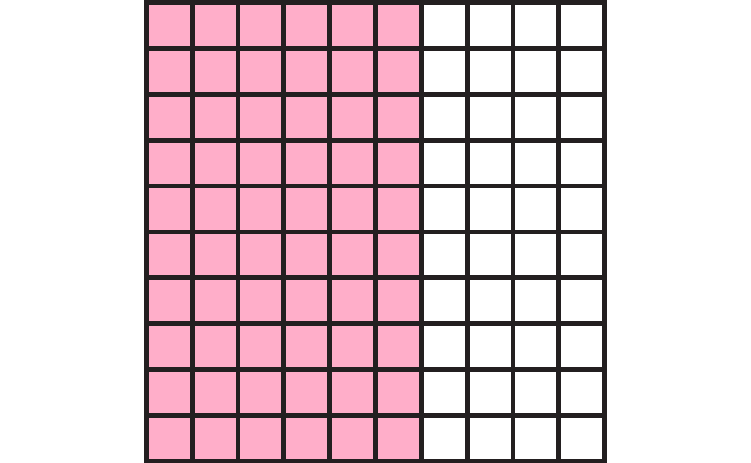
According to the problem, share the above grids into three equal parts.
Then, we have
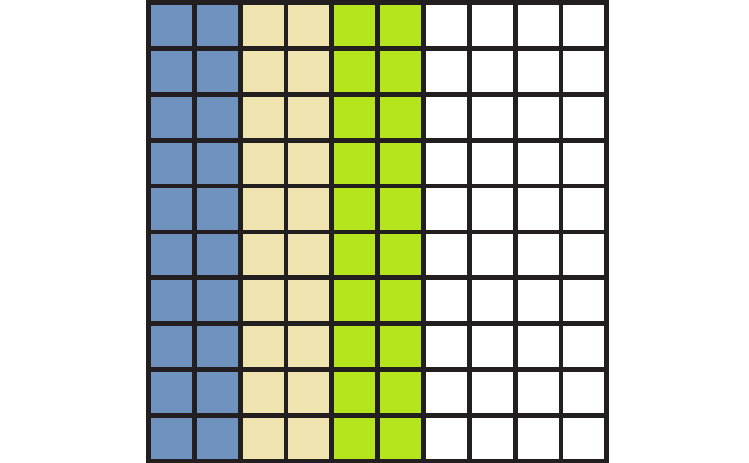
In the above grids, each part is shaded in different color and each part contains two columns.
Therefore, when the whole number number 6 is shared equally into three parts 3, each part is
= 2(Wholes) ----(1)
In the picture given below, let us assume that each square grid has the length one tenth unit (1/10).
In the given decimal 6.39, the tenth part is 3. To represent this three tenth (0.3), let us shade the first three columns.
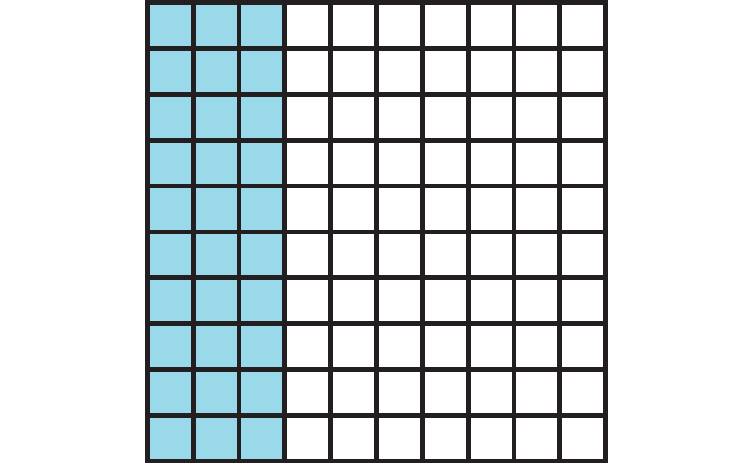
According to the problem, share the above grids into three equal parts.
Then, we have
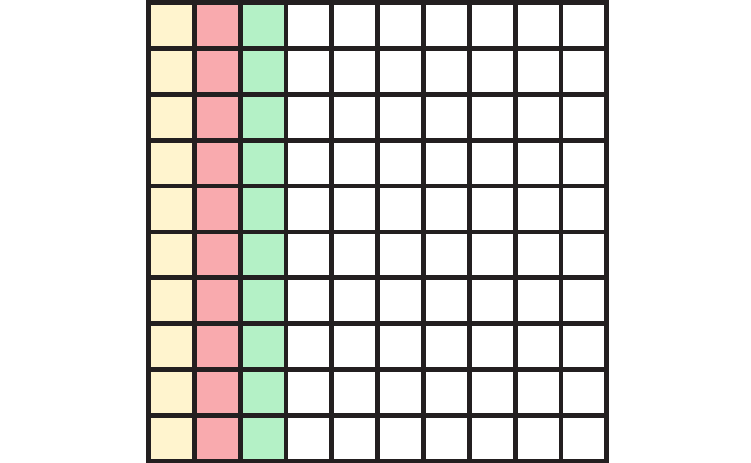
In the above grids, each part is shaded in different color and each part contains only one column.
Therefore, when the three tenth is shared equally into three parts, each part is
= 1(Tenths) ----(2)
In the picture given below, let us assume that each square grid has the length one hundredth unit (1/100).
In the given decimal 6.39, the hundredth part is 9. To represent this nine hundredth (0.09), let us shade the first nine columns.
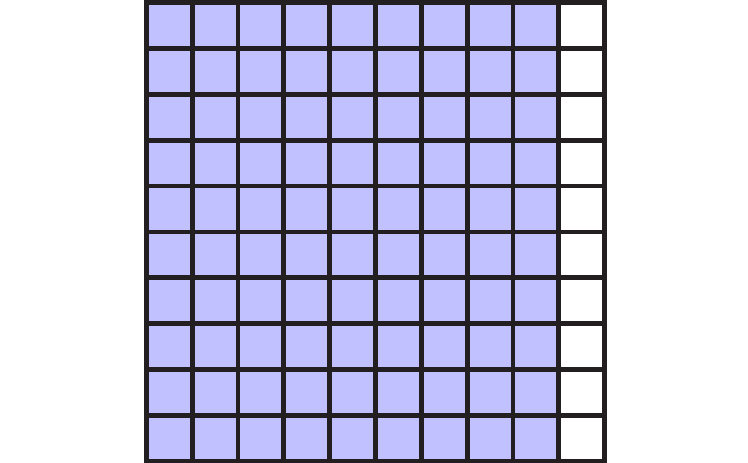
According to the problem, share the above grids into three equal parts.
Then, we have

In the above grids, each part is shaded in different color and each part contains three columns.
Therefore, when the nine hundredths is shared equally into three parts, each part is
= 3(Hundredths) ----(1)
From (1), (2) and (3), we get
6.39 ÷ 3 = 2.13
Use the model to find the quotient.
Problem 1 :
2.4 ÷ 4
Solution :
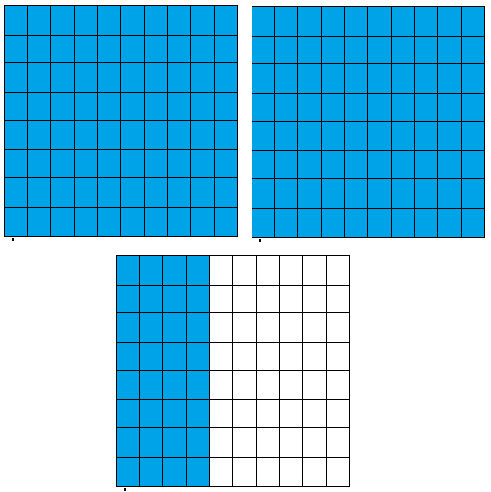
We have 2 wholes and 4 tenths, totally 24 tenths Decomposing into four equal parts,
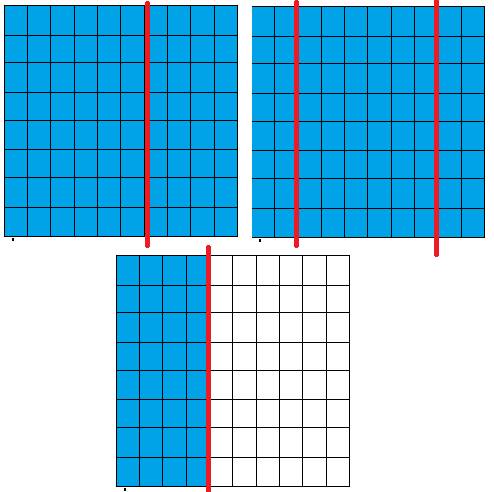
we have six tenths in each group, so the answer is 0.6.
The decimal has been divided as if it was a whole number. Count the number of decimal digits to insert the decimal point.
Problem 2 :
14.8 ÷ 2
Solution :
14.8 ÷ 2
- Dividing 14 whole by 2, we get 7 wholes.
- Dividing 8 tenths, we get 4 tenths.
So, the answer will be 7 wholes and 4 tenths. Answer is 7.4
Problem 3 :
Raj runs 1.8 km in 9 minutes. How far does he run in 1 minute?
Solution :
Distance covered by Raj = 1.8 km
Time taken = 9 minutes
Distance covered in 1 minute = 1.8/9
= 0.2
So, distance covered in each minute is 0.2 km
Problem 4 :
A row of 4 nickels placed side by side is 84.8 mm long. What is the width of 1 nickel?
Solution :
Length = 84.8 mm
Width covered by 1 nickel = 84.8
84 wholes and 8 tenths. Totally we have 848 tenths. Dividing 848 by 4, we get 212 thenths.
Then the answer is 21 wholes 2 tenths. That is, 21.2.
Problem 5 :
If you divide a number by 10, the result is 12.9. What is the original number? Explain.
Solution :
Let x be the unknown number.
x/10 = 12.9
To find the missing number, we have to multiply the result by 10.
= 12.9 x 10
= 129
So, the answer is 129.
Problem 6 :
Rani lives 2.4 km from the park. She walks to the park and back every day. How many kilometres does she walk to and from the park in a week?
Solution :
Distance between Rani's home and park = 2.4 km
Distance covered by her in a day = 2(2.4)
= 4.8
Number of days in a week = 7
Distance covered by her in a week = 4.8(7)
= 33.6 km
Write the division equation for the base ten model
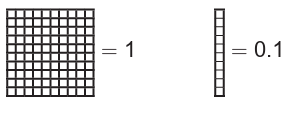
Problem 7 :
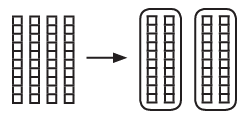
Solution :
Four tenths is being dividied in to two equal groups.
0.4/2 = 0.2
So, the quotient is 0.2
Problem 8 :
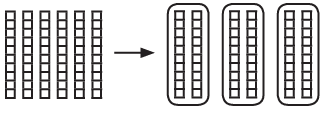
Solution :
Six tenths is being dividied in to three equal groups.
0.6/3 = 0.2
So, the quotient is 0.2
Problem 9 :
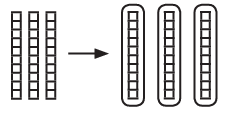
Solution :
Three tenths is being dividied in to three equal groups.
0.3/3 = 0.1
So, the quotient is 0.1
Problem 10 :
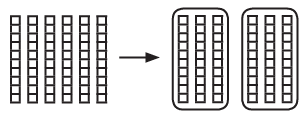
Solution :
Sixth tenths is being dividied in to two equal groups.
0.6/2 = 0.3
So, the quotient is 0.3
Problem 11 :

Solution :
Eight tenths is being dividied in to four equal groups.
0.8/4 = 0.2
Problem 12 :

Solution :
Four tenths is being dividied in to four equal groups.
0.4/4 = 0.1
So, the quotient is 0.1
Subscribe to our ▶️ YouTube channel 🔴 for the latest videos, updates, and tips.
Kindly mail your feedback to v4formath@gmail.com
We always appreciate your feedback.
About Us | Contact Us | Privacy Policy
©All rights reserved. onlinemath4all.com
Recent Articles
-
Quantitative Reasoning Questions and Answers
Dec 14, 25 06:42 AM
Quantitative Reasoning Questions and Answers -
Specifying Units of Measure
Dec 14, 25 06:38 AM
Specifying Units of Measure -
Coin Tossing Probability
Dec 13, 25 10:11 AM
Coin Tossing Probability - Concept - Sample Space - Formula - Solved Problems